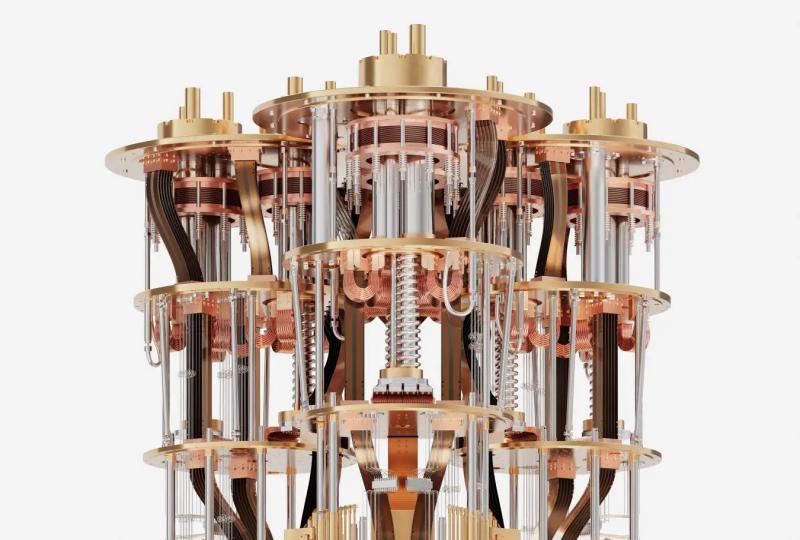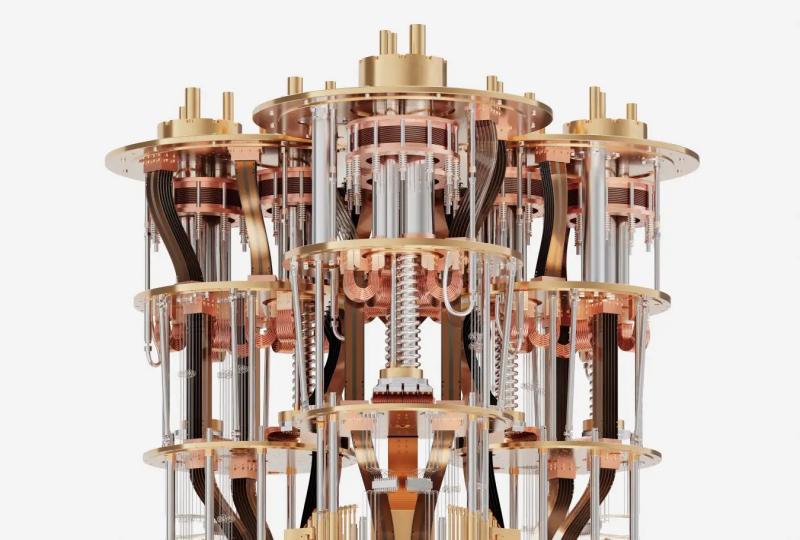Quantum Chip Design - Crafting the Core of Quantum Tech
2025.07.09 · Blog Quantum Chip Design
-
Introduction
Brief Overview of Quantum Computing
-
Quantum computing represents a revolutionary leap in computational power, leveraging the principles of quantum mechanics. It has the potential to solve complex problems that are currently intractable for classical computers, spanning various sectors from scientific research to business applications.
The Significance of Quantum Chip Design
-
Quantum chips are the physical manifestation of quantum computing power. Their design is crucial as it determines the performance, scalability, and functionality of quantum computers. A well - designed quantum chip can enable faster computations, higher accuracy, and new capabilities in quantum information processing.
-
Principles of Quantum Mechanics in Chip Design
Superposition
-
Concept Explanation: Superposition allows qubits to exist in multiple states simultaneously, unlike classical bits which are either 0 or 1. In quantum chip design, engineers strive to create qubits that can maintain stable superposition states. For example, in a superconducting quantum chip, qubits made from Josephson junctions can be engineered to hold superposition, enabling parallel processing of information.
-
Implications for Chip Design: Designers need to carefully control the environment of qubits to preserve superposition. This includes minimizing external noise, such as thermal and electromagnetic interference, which can disrupt the delicate quantum states.
Entanglement
-
Concept Explanation: Entanglement is a phenomenon where two or more qubits become correlated in such a way that the state of one instantaneously affects the state of the others, regardless of the distance between them. In ion - trap quantum chips, ions can be entangled through laser - based interactions.
-
Role in Chip Design: Entanglement is essential for complex quantum algorithms. Chip designers must develop techniques to create, control, and measure entangled qubits accurately. This requires precise manipulation of the qubits' interactions, often through carefully calibrated electromagnetic fields or laser pulses.
-
Key Elements in Quantum Chip Design
Qubit Design
-
Superconducting Qubits
-
Structure and Operation: Superconducting qubits, like transmon qubits, consist of a capacitor - in - parallel - with - a - Josephson - junction structure. They operate at extremely low temperatures, where the superconducting material exhibits zero electrical resistance. Microwave pulses are used to manipulate the qubits' states.
-
Advantages and Challenges: Advantages include relatively easy fabrication and high - speed operation. However, they are highly sensitive to environmental noise, and maintaining the low - temperature environment is technically demanding.
-
-
Ion - Trap Qubits
-
Structure and Operation: Ion - trap qubits use individual trapped ions held in an electromagnetic field. The internal quantum states of these ions are used for computing. Laser beams are employed to manipulate and read out the qubits.
-
Advantages and Challenges: They offer high qubit fidelity and long coherence times. But scaling up the number of ions in a trap while maintaining individual control is a significant challenge.
-
-
Nuclear Magnetic Resonance (NMR) Qubits
-
Structure and Operation: NMR qubits utilize the nuclear spins of atoms within a molecule. Radio - frequency pulses are applied to manipulate these spins. These qubits can operate at room temperature.
-
Advantages and Challenges: The ability to operate at room temperature is an advantage. However, NMR qubits face limitations in terms of scalability and the relatively weak signals they produce.
-
Control and Read - Out Systems
-
Control Systems
-
Microwave - Based Control: In superconducting quantum chips, microwave - based control systems are used to generate and deliver precise microwave pulses to the qubits. These systems need to be highly accurate and capable of generating synchronized pulses for multi - qubit operations.
-
Laser - Based Control (for Ion - Trap Chips): For ion - trap chips, laser - based control systems are crucial. Lasers are used to cool the ions, manipulate their quantum states, and entangle them. The lasers must be precisely tuned and controlled to achieve the desired quantum operations.
-
-
Read - Out Systems
-
Single - Photon Detection (for Superconducting Chips): In superconducting chips, single - photon detectors are often used to read out the state of qubits. These detectors can detect the photons emitted or absorbed by the qubits, providing information about their quantum states.
-
Fluorescence Detection (for Ion - Trap Chips): Ion - trap chips use fluorescence detection. When a laser is applied to an ion, the fluorescence emitted can be detected, and the intensity and characteristics of the fluorescence can be used to determine the ion's quantum state.
-
-
Challenges in Quantum Chip Design
Decoherence
-
Causes of Decoherence: Decoherence can be caused by various factors such as thermal fluctuations, electromagnetic noise, and interactions with the surrounding environment. In superconducting chips, the presence of quasiparticles in the superconducting material can also lead to decoherence.
-
Strategies to Mitigate Decoherence: Chip designers employ strategies like better thermal insulation, shielding from electromagnetic interference, and using error - correction codes. For example, in some designs, qubits are placed in carefully designed cavities to reduce the impact of external noise.
Scalability
-
Technical Hurdles in Scaling: As the number of qubits increases, the complexity of controlling and communicating between qubits grows exponentially. In addition, physical limitations such as crosstalk between qubits and the difficulty of maintaining uniform conditions across a large number of qubits pose challenges.
-
Approaches to Overcome Scalability Issues: Researchers are exploring new materials, architectures, and control techniques. For instance, some are investigating the use of modular designs where smaller quantum chip modules can be interconnected to build larger - scale systems.
-
Industry Players and Innovations
SpinQ's Quantum Chip Design
-
Educational - Grade Chips: SpinQ's educational - grade NMR quantum chips are designed for simplicity and ease of use. They are aimed at introducing students and researchers to the basics of quantum computing. These chips are part of SpinQ's commitment to making quantum computing accessible in educational institutions.
-
Industrial - Grade Chips: For industrial applications, SpinQ focuses on developing high - performance superconducting quantum chips. These chips are designed to meet the needs of clients in industries such as scientific research, drug development, financial technology, and artificial intelligence. SpinQ aims to improve qubit performance, scalability, and integration with other components in quantum computing systems.
Other Leading Companies and Their Contributions
-
IBM: IBM has been a pioneer in superconducting quantum chip design. Their chips, such as the Eagle and Osprey, have a large number of qubits and are designed for high - performance quantum computing. IBM is also actively researching new materials and fabrication techniques to improve qubit coherence and scalability.
-
Google: Google's Quantum AI team has made significant contributions with chips like Sycamore and Willow. Their designs focus on achieving quantum supremacy in certain computational tasks and advancing the understanding of quantum error correction, which is crucial for large - scale quantum computing.
-
Future Outlook
Potential Advancements in Quantum Chip Design
-
New Materials and Architectures: The future may see the use of novel materials, such as topological insulators, in quantum chip design. These materials could offer unique quantum properties that may lead to more stable qubits and better - performing chips. New architectural designs, like 3D - integrated quantum chips, may also improve scalability and reduce crosstalk.
-
Integration with Classical Computing: Quantum chips are likely to be integrated with classical computing systems in a more seamless way. This hybrid approach could enable the best of both worlds, with classical computers handling pre - and post - processing tasks, while quantum chips perform complex quantum computations.
Impact on Various Industries
-
Scientific Research: Quantum chips will continue to revolutionize scientific research, enabling more accurate simulations in physics, chemistry, and materials science. For example, in astronomy, they could help simulate the behavior of matter in extreme conditions, such as in black holes.
-
Business and Finance: In the business world, quantum chips could transform supply chain optimization, risk assessment, and fraud detection. In finance, they may enable more sophisticated portfolio management strategies.
-
Conclusion
Summary of Key Points
-
Quantum chip design is a complex and rapidly evolving field. It is based on the principles of quantum mechanics, with qubits and control/read - out systems being key elements. Despite facing challenges like decoherence and scalability, significant progress is being made.
The Promise of Quantum Chip Design
-
Quantum chip design holds the promise of unlocking the full potential of quantum computing. As technology advances, quantum chips are expected to become more powerful, reliable, and widely adopted, leading to transformative changes in multiple industries.
Featured Content






